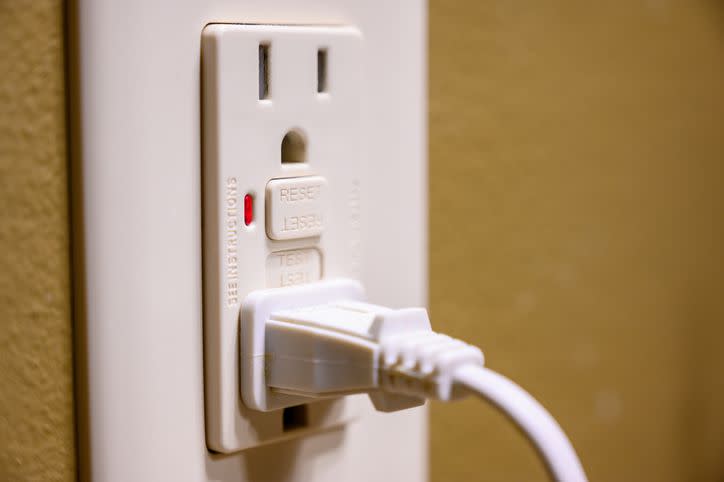16 Easy Things You Should Be Doing to Save Money Right Now

Looking for extra ways to save some cash?
Whether putting money away for a rainy day or for the holiday season, good savings habits can prepare you for emergencies and life changes. While it may seem like a struggle, rest assured there are countless ways to build up your savings. It starts with trimming down the expenses that tend to take the biggest bite of your budget, from groceries to gas. We’ll walk you through 16 tips to cut back in each of these categories.

How to save money on groceries

1. Use the right credit card for grocery store purchases.
You can really maximize your money simply by selecting the right credit card to swipe at the register. Certain credit cards offer lucrative rewards for grocery store purchases, and many don’t have annual fees. Rewards can climb up to 3% cash back at supermarkets, which can add up during your weekly grocery runs.

2. Compare prices with an app that aggregates various grocery store flyers.
Gone are the days of sifting through pages of flyers and clipping coupons. Instead, check out Flipp, an app that allows you to browse through thousands of weekly ads and compare prices among retailers to make sure you’re really getting your best deal.

3. Opt for products that are on high or low shelves — not at eye-level.
Higher priced items or items with a high markup tend to be placed in the “bulls-eye zone,” the second and third shelves from the top. Look at below or above eye-level shelves for lower prices, whether it’s bulk items or store-brand options.

4. Shop in-season produce
In-season fruits and veggies not only tend to taste better, but they are also often less expensive than off-season produce. Check out the USDA for a guide to in-season produce to help you shave money off your grocery bill.

How to save money for a house

5. Shop around for multiple lender offers
If you’re in the market to buy a house, keep in mind that rates and fees for mortgages vary widely. Just like you’ll take your time hunting for the perfect house, you should also be comparison shopping with lenders. LendingTree’s mortgage comparison tool can help you get started.

6. Consider a shorter-term loan
While shorter-term mortgage loans typically come with larger monthly payments, they usually have lower interest rates, which means you’ll pay less over the life of the loan because the repayment period isn’t as long. Take the time to crunch the numbers to see if this option makes sense for you.

7. Research local or state special programs
There are various local and state programs designed to help residents shoulder the cost of buying a home. These can range from special down payment assistance loans to matching savings programs that help you save on homeownership.

8. Negotiate
Before you commit to a lender, make sure to negotiate to get your best offer. You can request a lower rate, the reduction or waiving of certain fees or a rate lock (meaning once you agree on a rate, that rate won’t change between the offer and closing).

How to save money on gas

9. Use a credit card that offers rewards on gas
Similar to how certain credit cards can maximize savings on groceries, other cards help you save on fuel, so be selective when gassing up. Rewards can range from cash back to car rental insurance.

10. Sign up for your go-to grocery store’s loyalty program
A number of large grocery chains, including Kroger and Hy-Vee, have free programs that reward shoppers with points they can use to pay for fuel at partner gas stations. For example, Shell has partnered with numerous grocery store chains, giving customers that shop at those chains discounts on gas when they purchase certain products with a special members card.

11. Shop for the best gas prices with apps and aggregator tools
Apps like GasBuddy compare fuel prices near you, so you can make sure you’re getting the best price at the pump. Those extra savings can add up over time, especially if you put in a lot of mileage.

12. Keep your car tires properly inflated
Properly inflated tires get better gas mileage and can end up saving you hundreds of dollars a year on fuel.

How to save money on your electric bill

13. Get an energy audit
Professional energy audits determine how energy is being used in your home and can outline steps to make your home more energy efficient, which will lower your electric bill. You can get relatively inexpensive professional energy audits, or you can do a DIY version.

14. Switch to LED lightbulbs
Not only are LED bulbs better for the environment, but they are known to use up to 75% less energy than regular light bulbs and last much longer, resulting in a lower electric bill.

15. Unplug appliances when not in use
Be sure to unplug appliances when you are not using them. These appliances can account for 5% to 10% of residential energy use, resulting in bigger bills.

16. Negotiate your electric bill
Just like you can negotiate for a lower rate on your mortgage, you can negotiate your utility bills. Contact your utility provider and ask them for a better rate, which could result in savings.

How your budget can help you save money
While all of the tips above can help you save money fast, the only way you can really make strides in your savings is if you carve out a place for it in your budget.
One way to make space for saving in your budget is to follow the 50/30/20 budgeting framework. With the 50/30/20 budget, the idea is that you will dedicate 50% of your monthly income toward essentials, 30% toward “wants” and 20% toward your savings. If you want to save more aggressively, you can flip the 30% and the 20% categories.
To incorporate savings more seamlessly into your everyday life, consider automating it. Many banks and credit unions offer features that allow you to automatically transfer a set amount of money from your checking account to your savings account on a cadence of your choosing. You can also look out for high-yield savings accounts to earn more on your savings.
At the end of the day, the most important aspect of saving money is to get started and then stick with it.
Editorial Note: The content of this article is based on the author’s opinions and recommendations alone. It may not have been reviewed, approved or otherwise endorsed by the credit card issuer. This site may be compensated through a credit card issuer partnership.
This article originally appeared on MagnifyMoney.com and was syndicated by MediaFeed.org.

